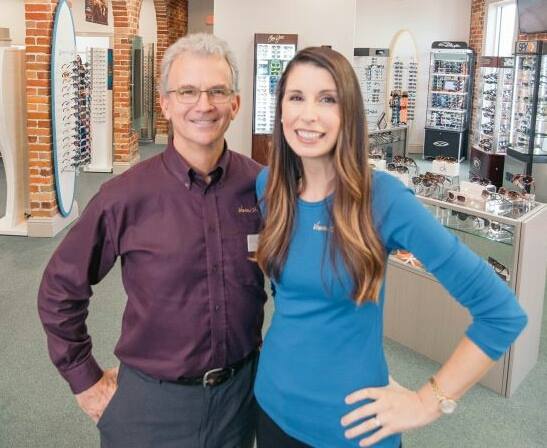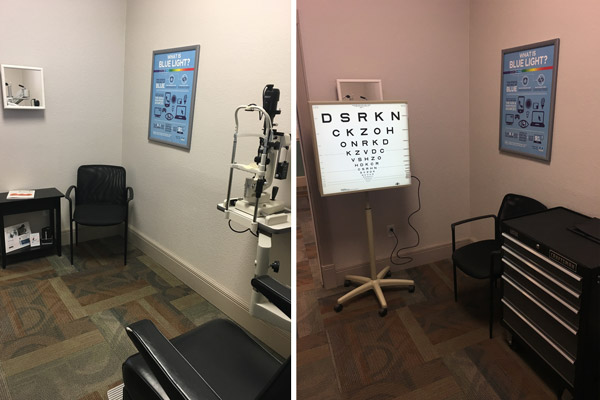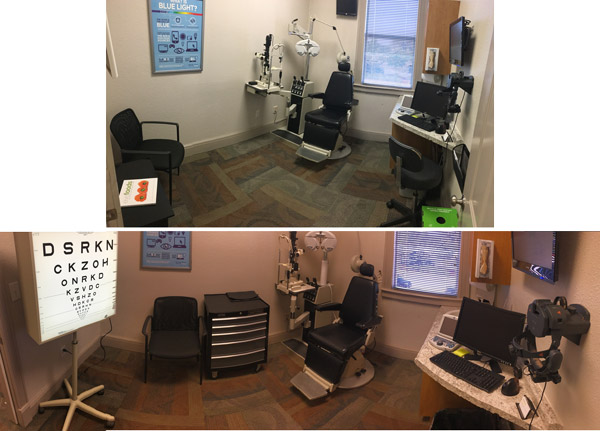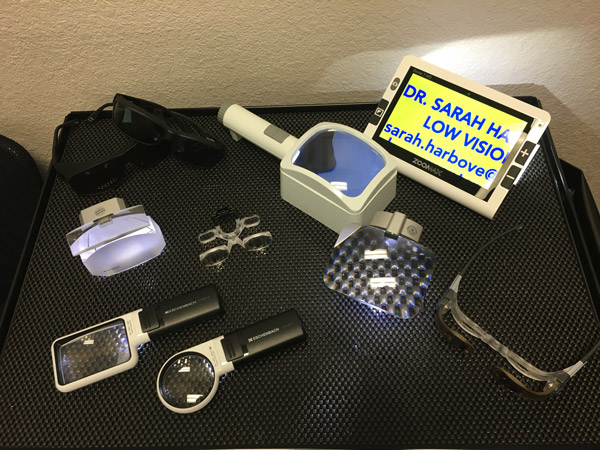

At Aker Eye Vision Source in Titusville, Florida, there’s a dedicated day on the schedule for seeing low vision patients. “Our low vision exams are so different from a healthy, comprehensive visit,” says Sarah Harbove, OD. There are adjustments made to the office that eliminate hazards from the space to make it safe and welcoming for patients with low vision. For example, the staff moves the furniture to help reduce obstacles and improve office flow on these days.
Dr. Harbove uses a special eye chart, oriented for low vision patients, on these days. There’s a movable eye chart with letters larger than the traditional “20/200 big E” to better assess someone with reduced vision. “It’s a positive experience, and family members are usually very encouraged by what patients can actually see,” she says.


Half of the exam is focused on history-taking. “Most of these patients are new to the practice, and we are focused on establishing a relationship and trust,” she says. “They are at different stages of acceptance as they go through their vision loss, and it can vary on how much help that they want.” A vast majority of her low vision patients are older, mostly 70 years old and up, with macular degeneration, but she also has younger patients with retinitis pigmentosa or other congenial or hereditary conditions.


Low vision exams are goals-oriented, says Dr. Harbove, and patients are instructed on a welcome letter to identify specific tasks they need to do related to their hobbies, such as a tablet or cross-stitching tools. Many visually impaired patients want better ability to read, she says. “Their primary goal is to read their Bible, their mail or their Kindle, and with near devices we can help with that first.” She discusses with patients how lighting and contrast are crucial factors in helping them to see and how sun- and UV-protection is essential to maintain their progress. Sometimes simply updating an old prescription can make a world of difference.
She takes the time to introduce new technology that may be able to assist them in their daily lives. There are pens that can help with writing and distance magnification tools for patients who want to watch TV. One of her patients wears tinted distance telescope to fly model airplanes. “These patients can be hesitant if we can help them, and we do they are over the moon,” Dr. Harbove says.
Yet she says not to be surprised when the reactions from patients vary greatly. “It depends on how far they are into the acceptance,” she explains. “When you have had a disease for much of your life, you are more open to options and devices that help you see better. When it happens later in life, it rocks your world and there is a grieving process.”





